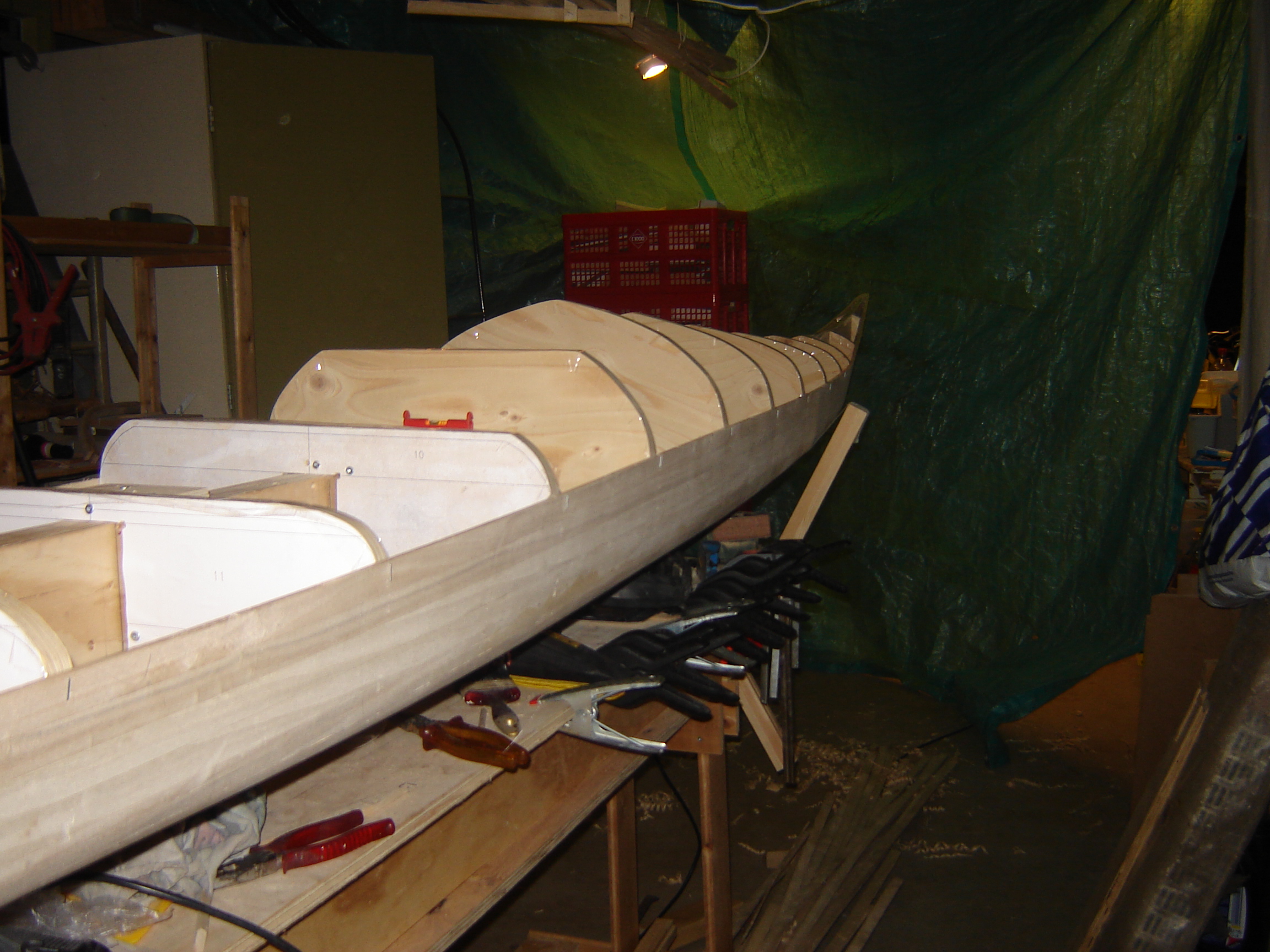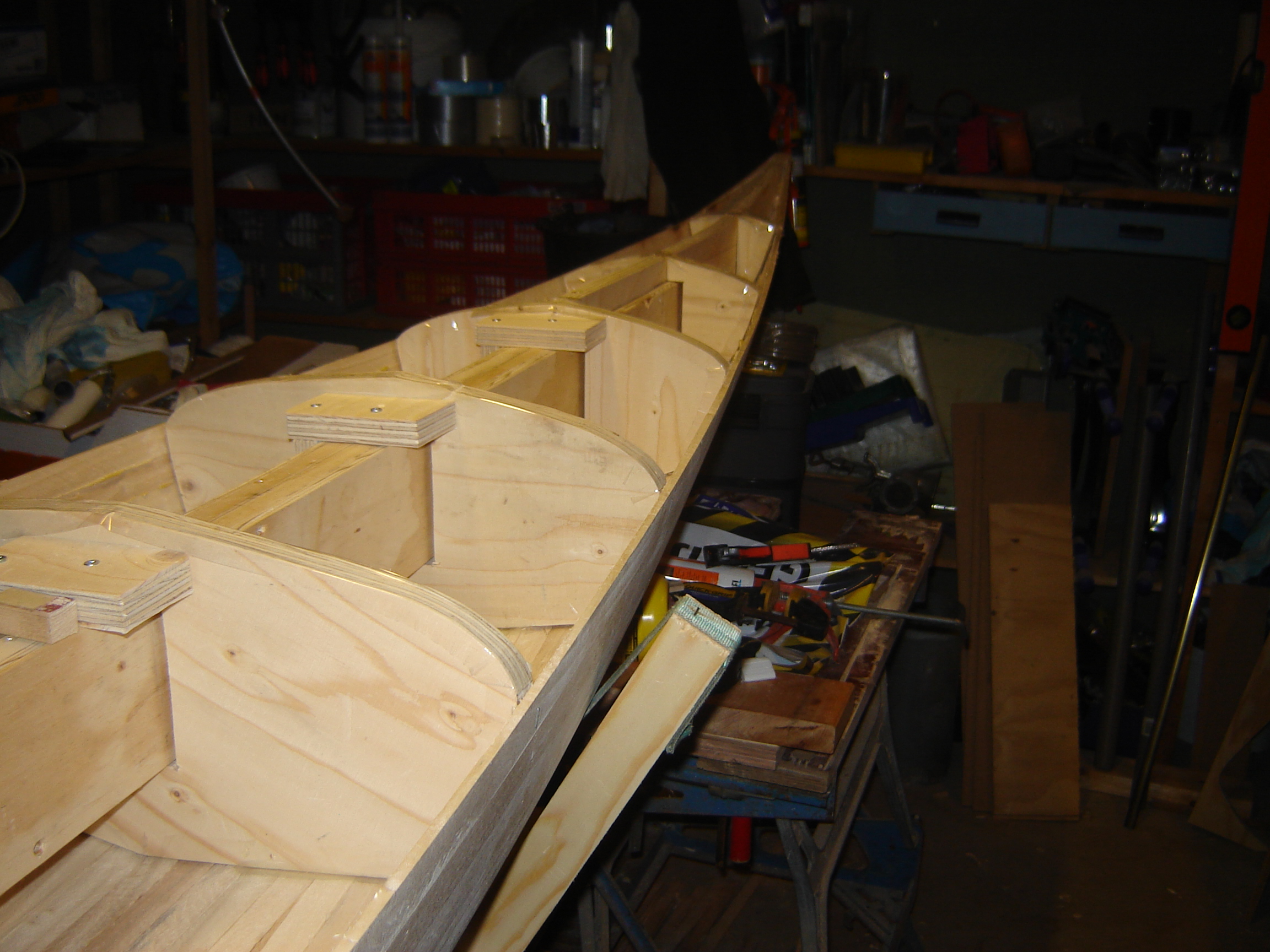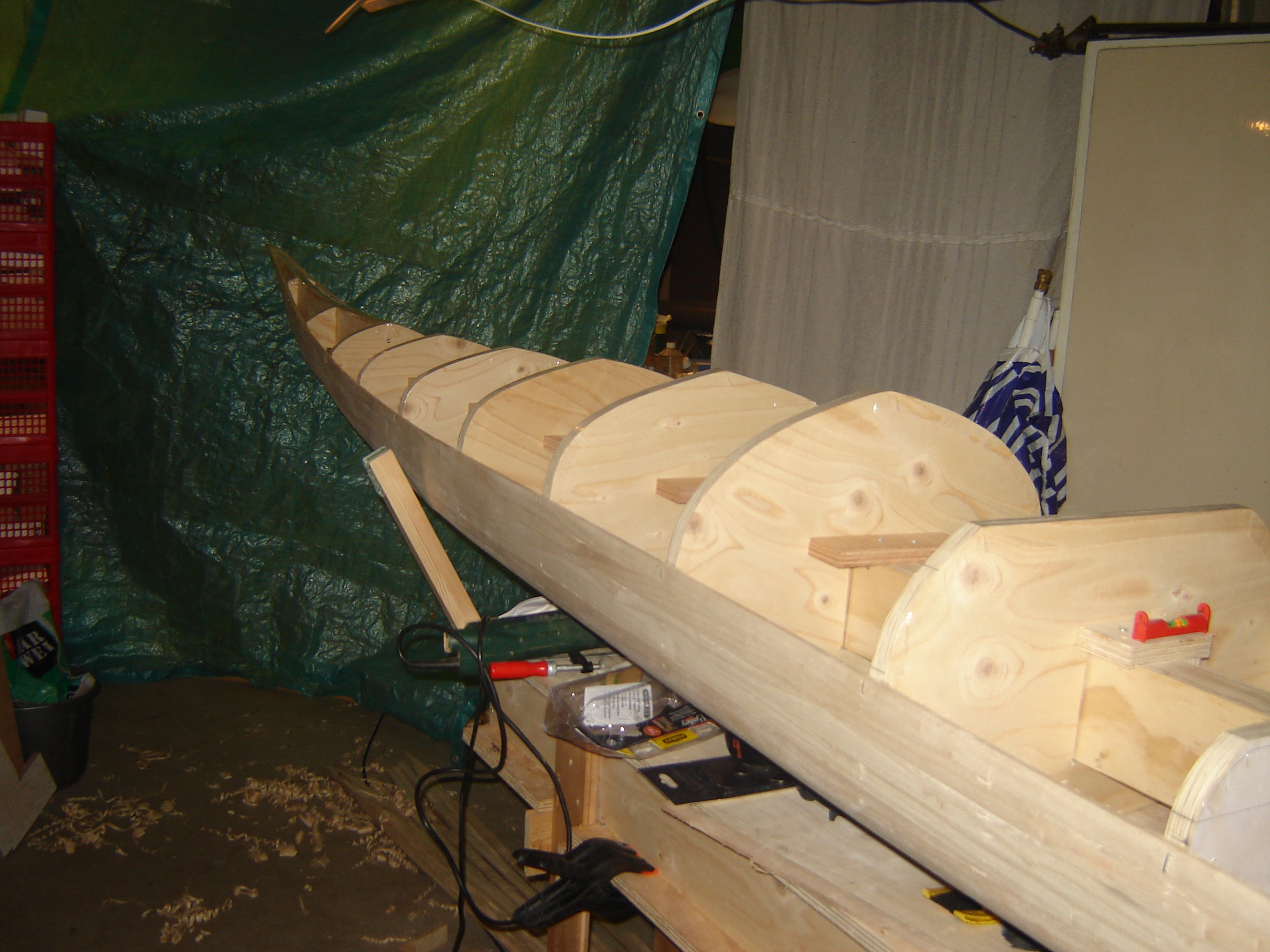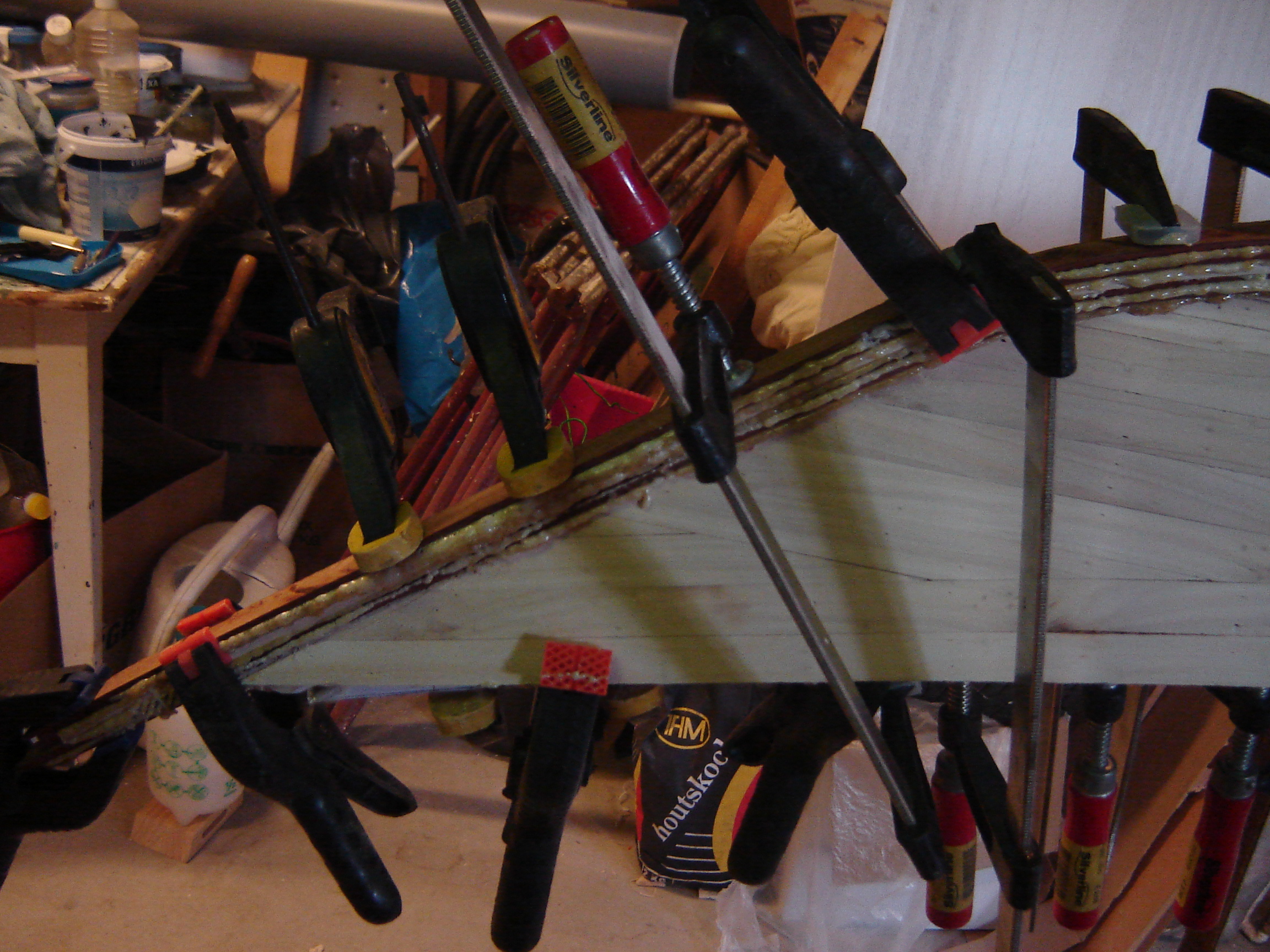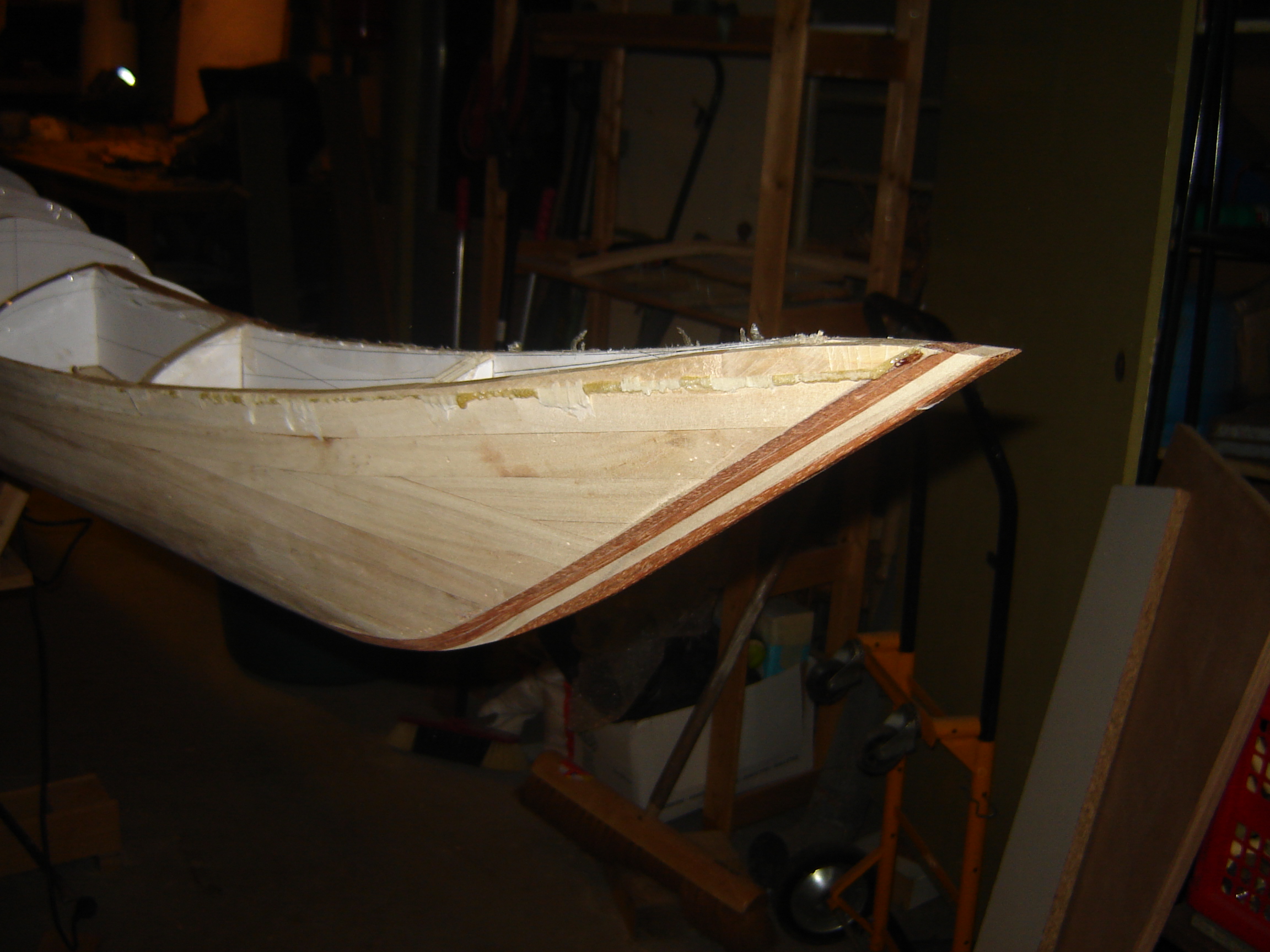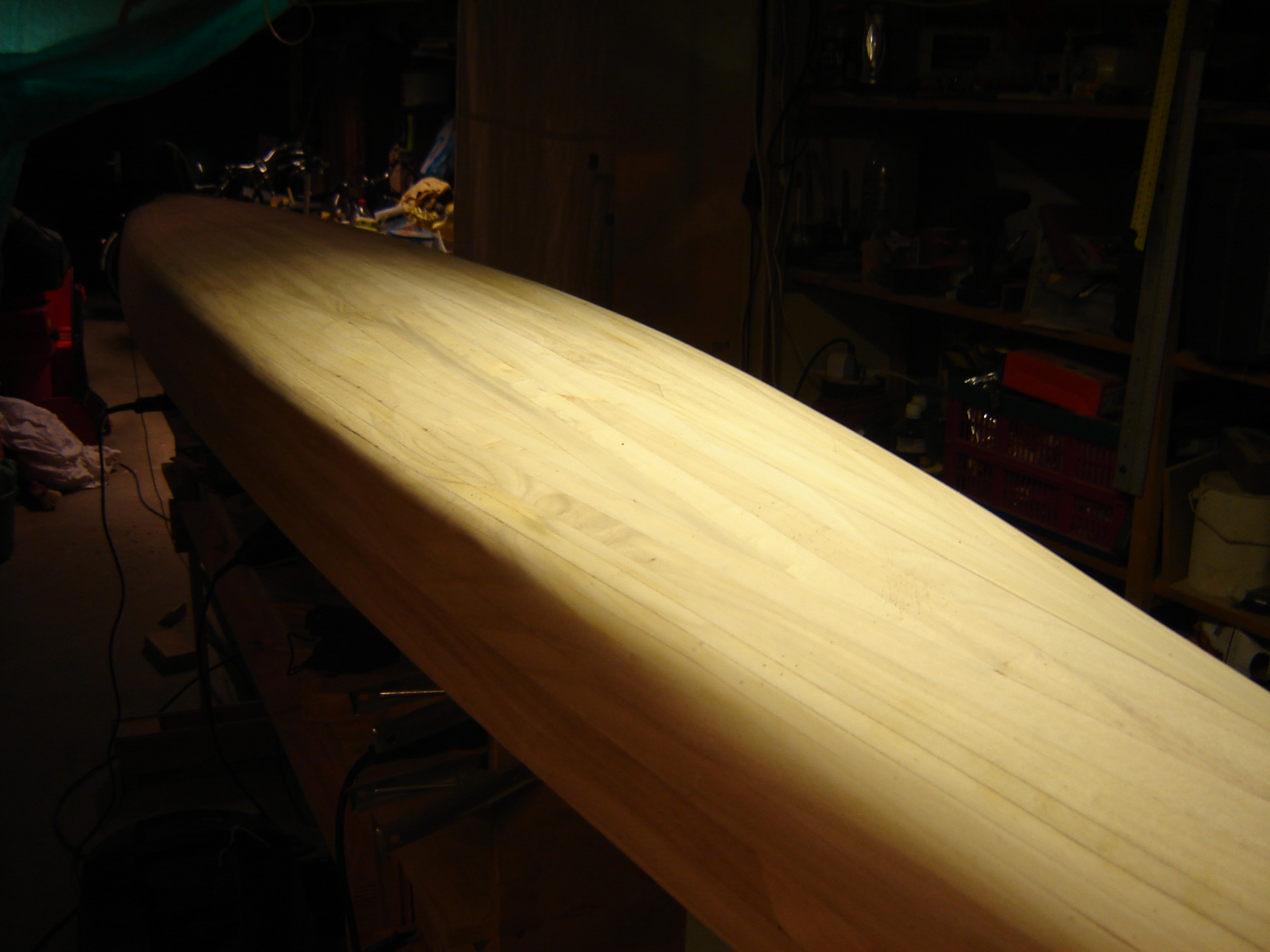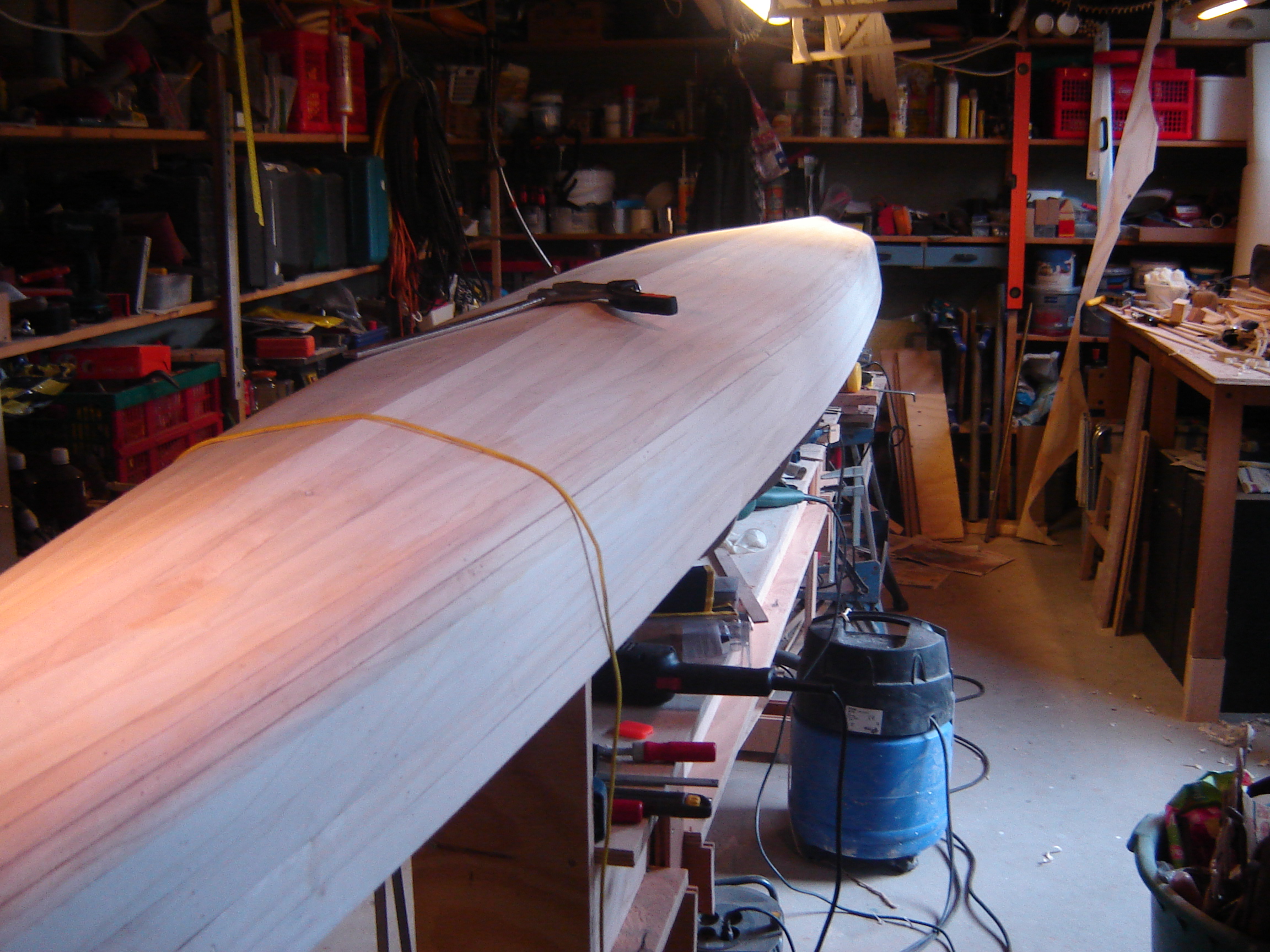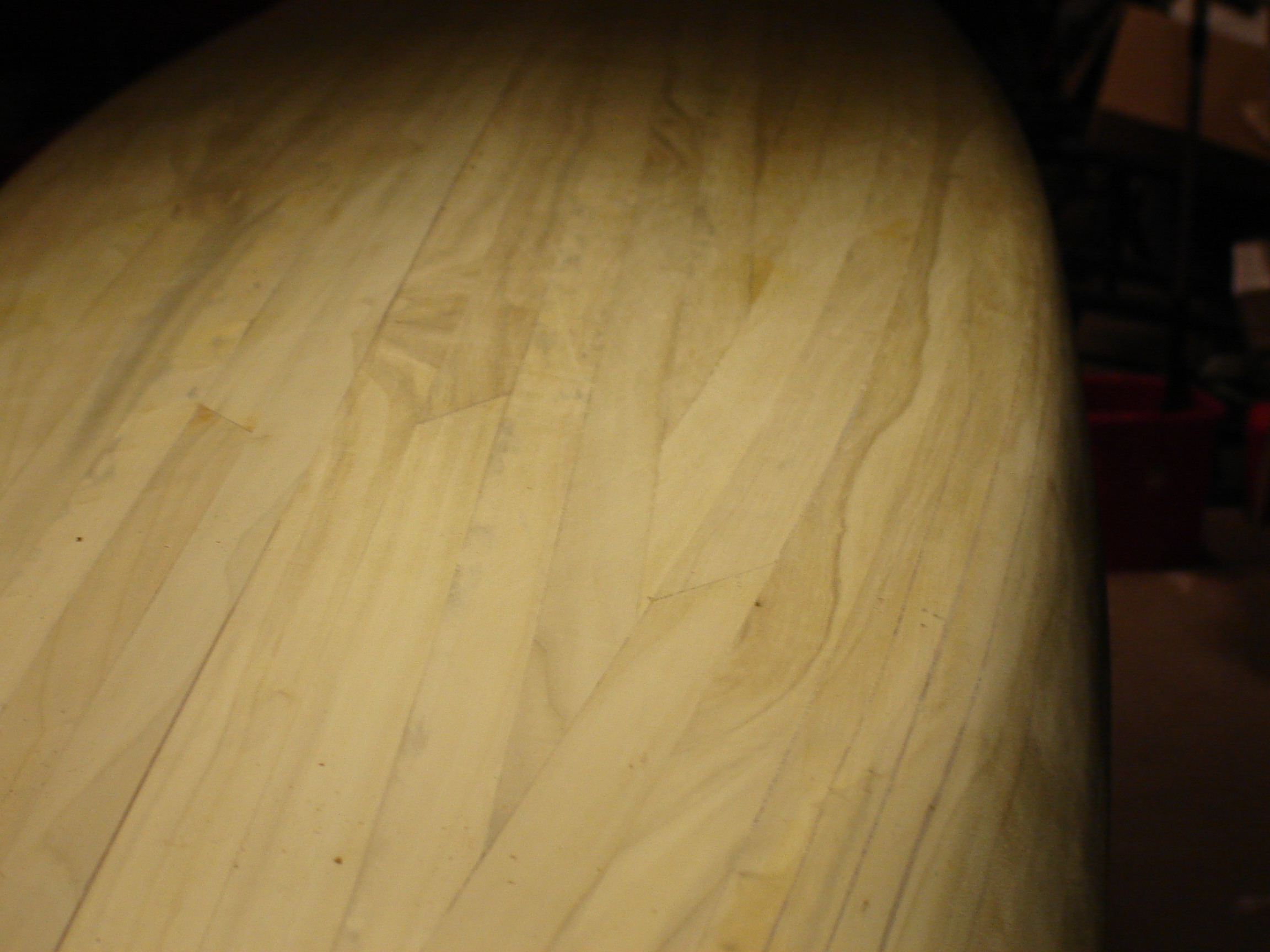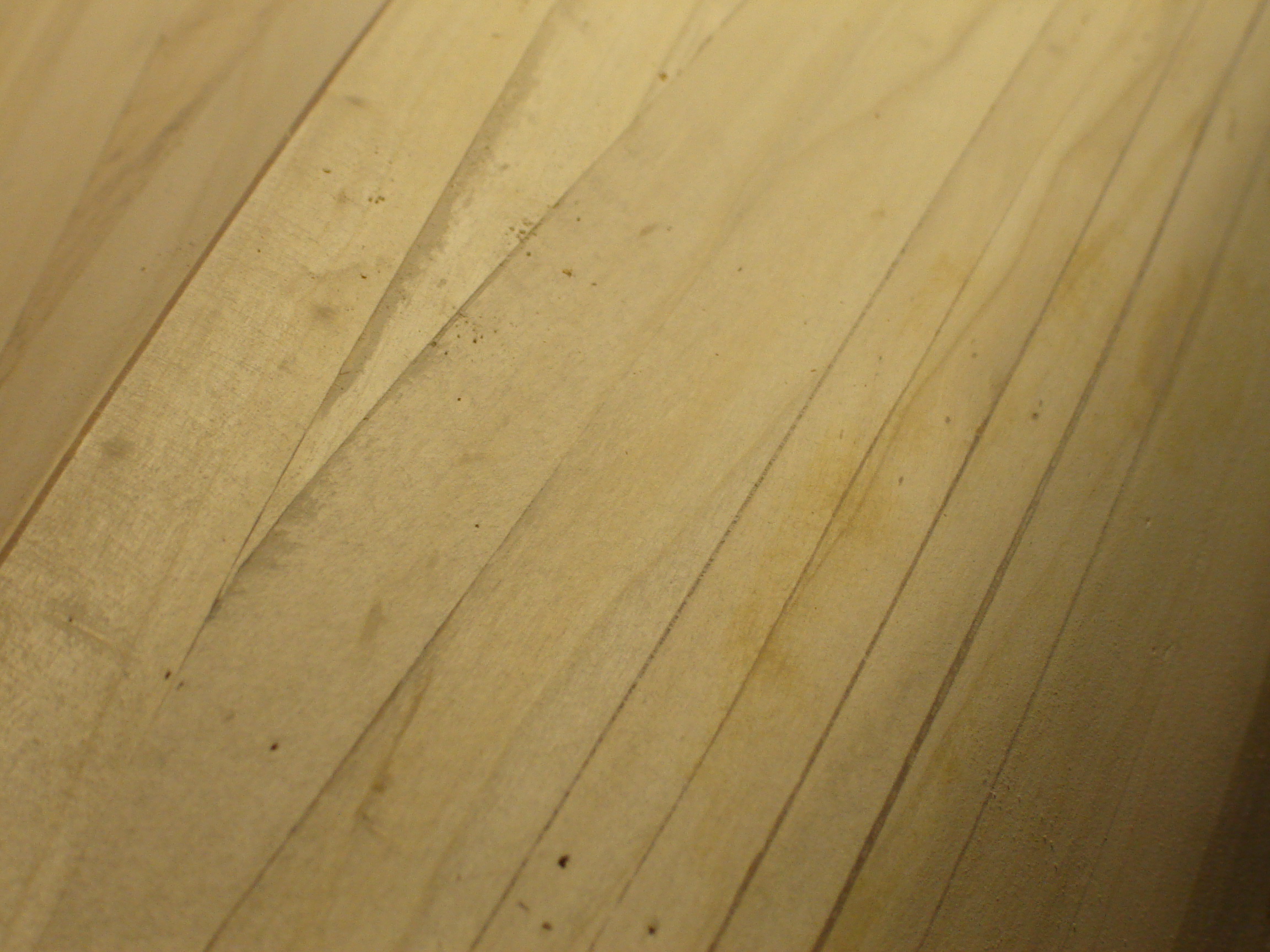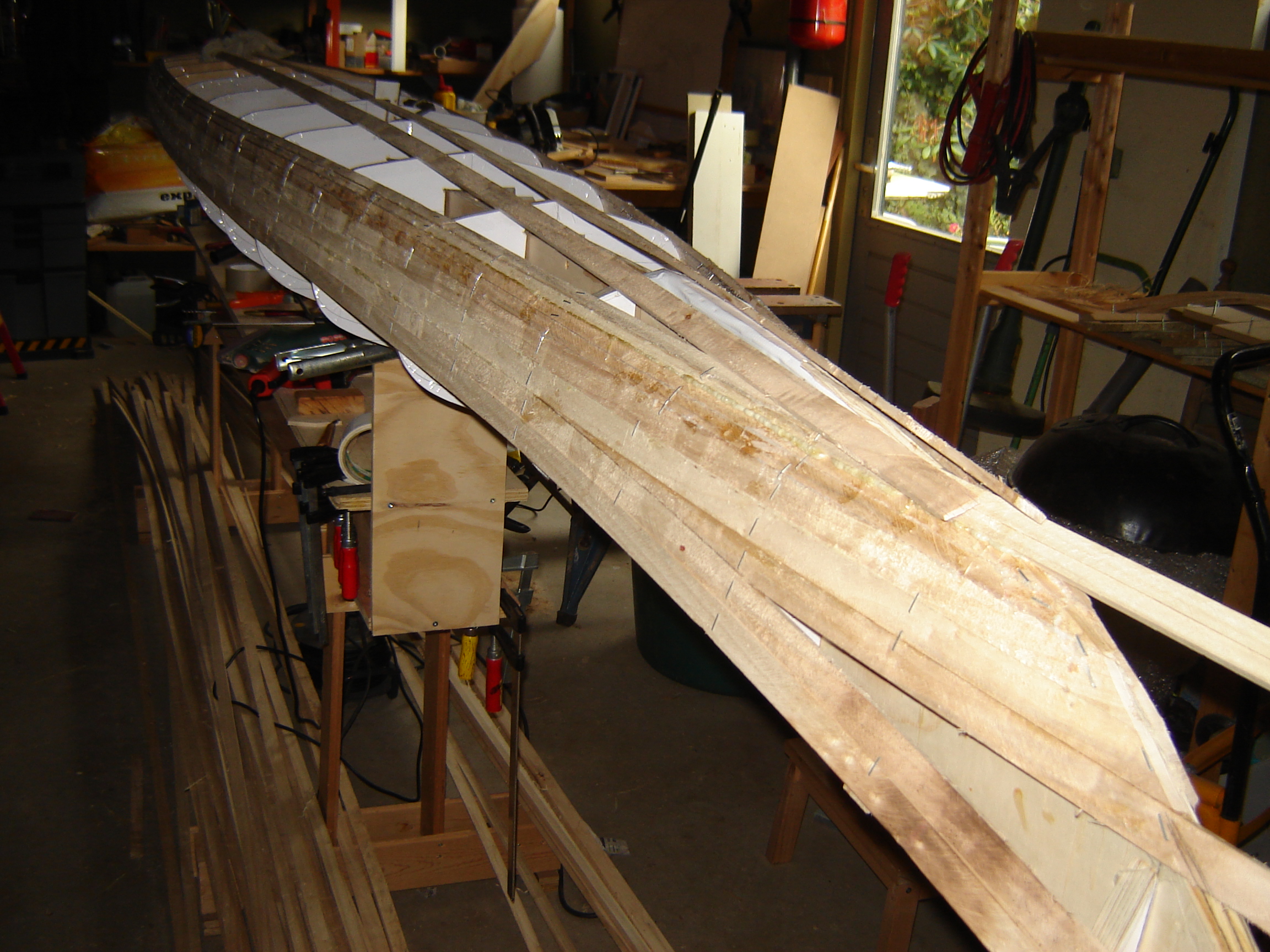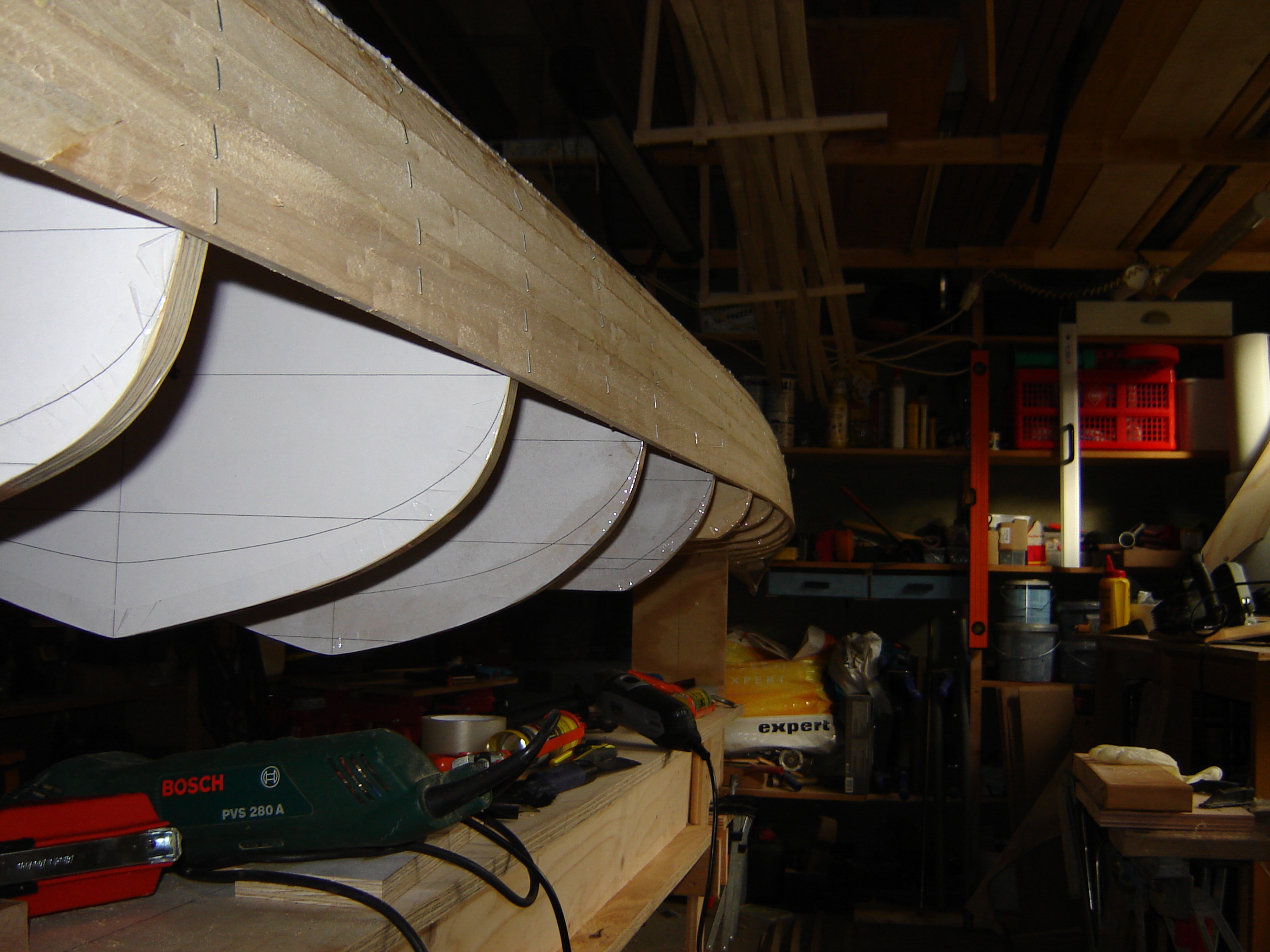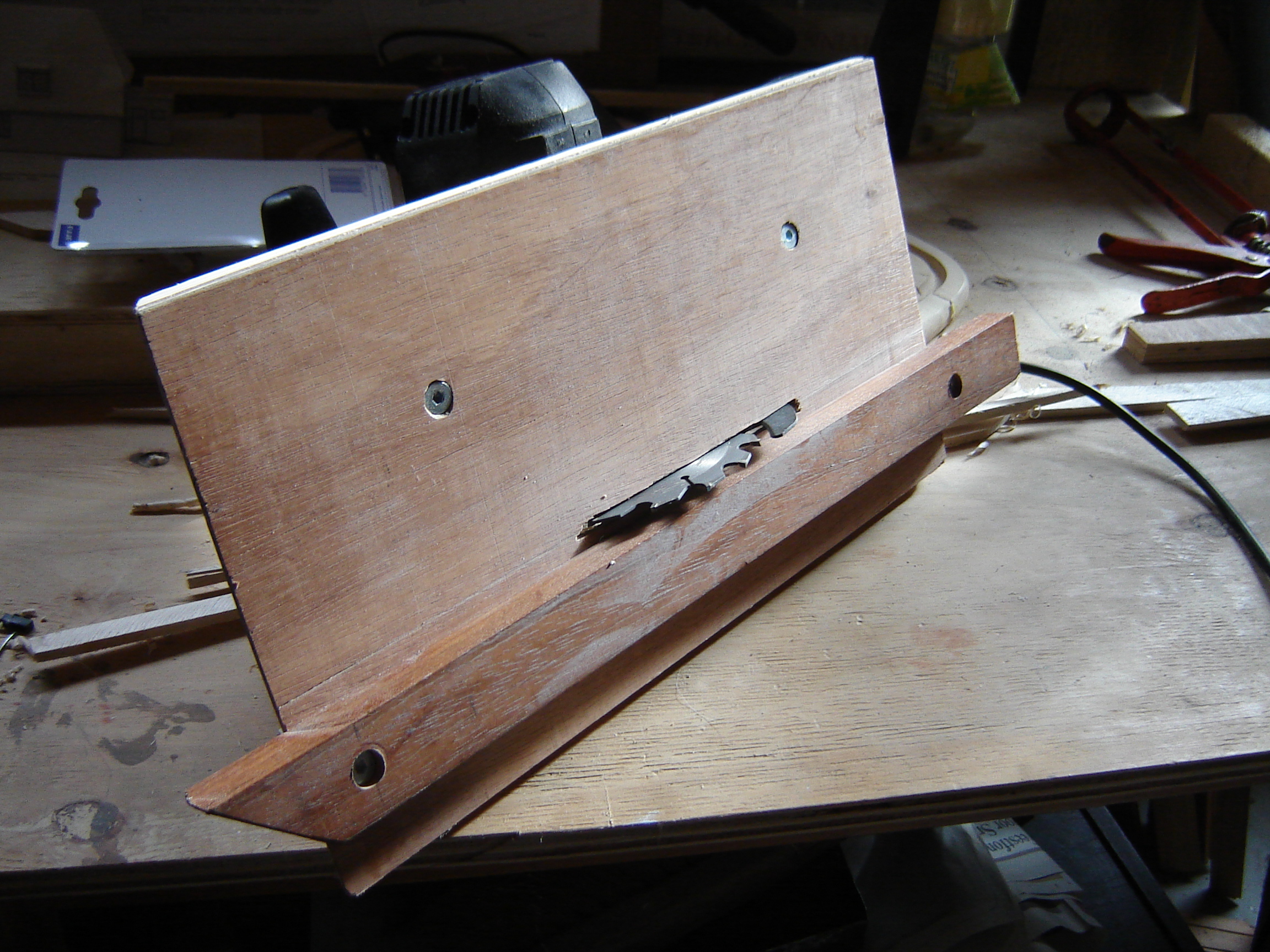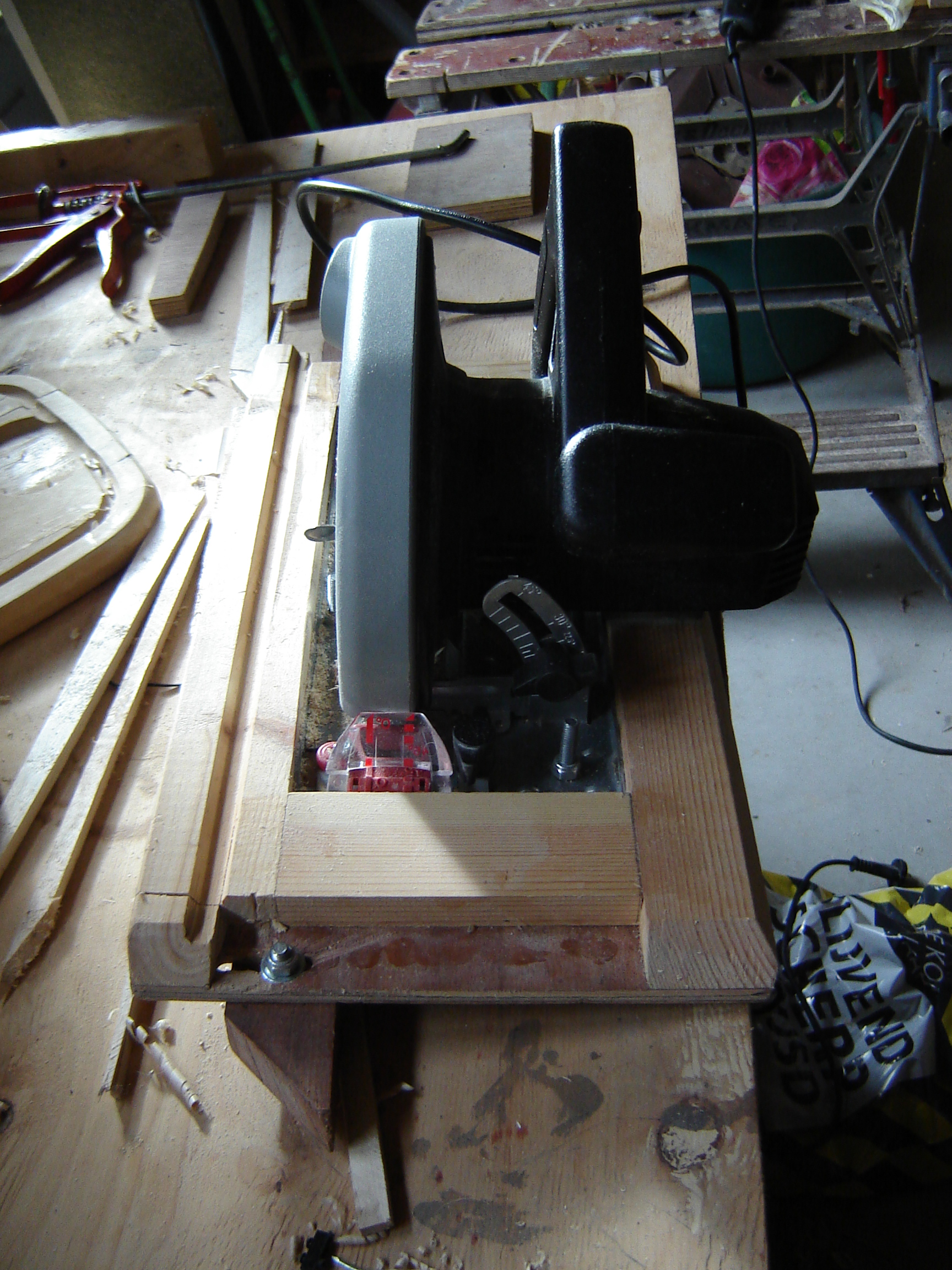After long years reading, lurking Nicks website and waiting, I started making the boxbeam. I hope it is not too flexible. I read that after the first strips on both sides it will be much stiffer but I know that will only be in the horizontal plane. Off course is the beam much stiffer in the verical plane but not as stiff as I expected.
It is made frome underlayment ply 19 mm (3/4″) thick and I followed Nicks book.
Second I made a copy of the frames from Nicks drawing because I did not like setting the siccors in the original. It did cost almost € 20,– but it saved a lot of work. At first I planned to use carbon-paper to make a copy on the wood.
To morrow I start glueing the frame plans on a piece of A-quality underlayment and I will cut it out with a saber-saw. I will use a saw with teeth in the opposite direction to prevent lifting of the glued paper.
Ten years ago I did build the Guillemot Stich and Glue and it has been my favorit since then.
Seven years ago I ordered the plans for the Expedition Single and the Night Heron. I wanted to build the Expedition Single first but I could not get Western Red Cedar cheap enough so I will build it from Poplar. Normaly that wood is not used for boat building, but it is lighter then fir and I could lay my hands on a few boards very cheap.
The Expedition Single is more difficult te build because of the hollows at the bows so I start with the Night Heron.

